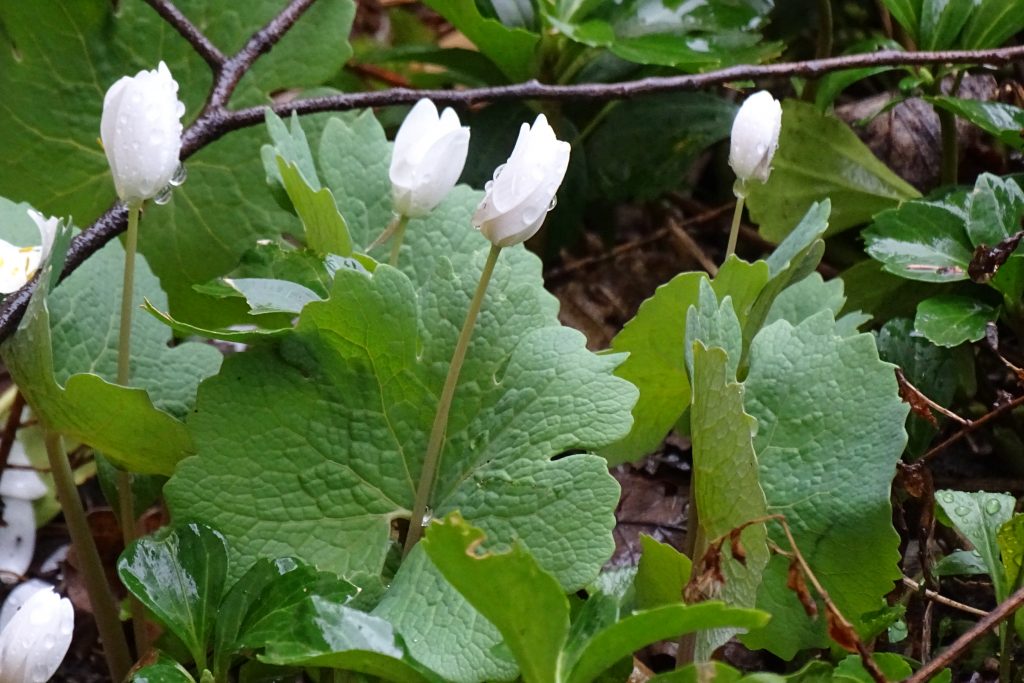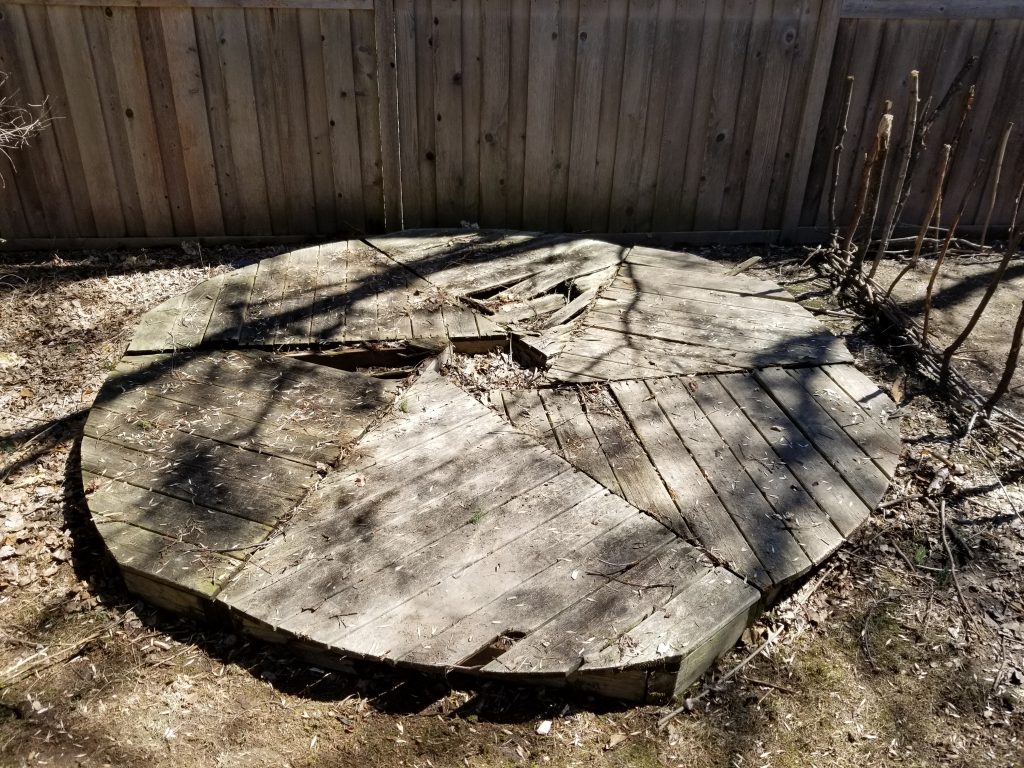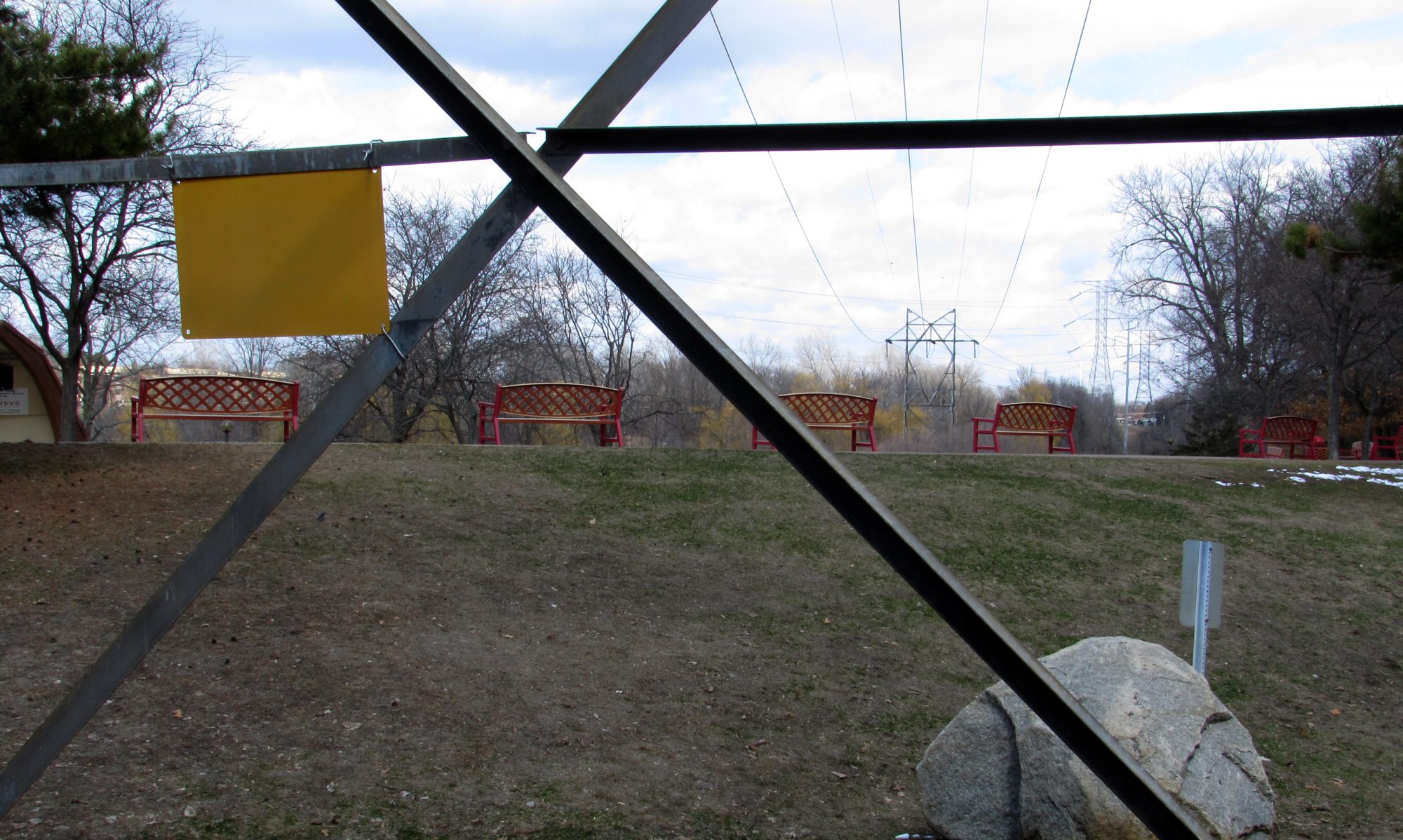
Spring is a time of transitions. Blood Root peek up from the damp, grey-brown earth with their fragile stems and delicate petals. Buds thicken the ends of tree twigs with green potential. Robins, with mouthfuls of dried grass, weave their nests anticipating a new generation within small blue eggs. In each of these cases, something had to disintegrate to provide the circumstances for something new. Soil nutrients are based on the investment of last year’s life.
I’ve been thinking about transitions. March 21 marked the 11th birthday of Full Spring Studio. And today, April 22nd, Earth Day, is the ground breaking ceremony for the new interpretive building at Westwood Hills Nature Center in St. Louis Park. While I don’t live in St. Louis Park anymore, I have an attachment to it, particularly to Westwood Hills Nature Center, since it was here in 2008 that I started work with a great team and community on Children’s Nest Egg (In the Park), a participatory public art project. And it was this project that inspired me to start Full Spring Studio, LLC.

Children’s Nest Egg, was always about transitions. Its guiding poem travels from the story of an all-encompassing “Earth” as mother, to the fragile blue egg in space that “must be cared for as our child.” Likewise, its path into the nest is a transition in scale. As a person enters the nest that is larger than life, they are made small like a bird, only to find an Earth egg inside, re-sizing them larger than the planet. The project is also about the transition of disintegration and renewal. Over time, the woven branches that make the nest wall, decompose and settle until a new volunteer group builds up the nest again, stacking branches and sewing them in place with the giant wooden needle and Manila rope. The nest renewal reinforces the theme of nature appreciation and stewardship that community members expressed in their poetry engraved in the bench near the center of the artwork.
Dis-integration
Last June, I got a call from Mark Oestreich, Director of Westwood Hills Nature Center. He said that an exciting new project was planned for the Nature Center – a green building that would produce as much energy as it used, demonstrating its environmental responsibility as it welcomed visitors to explore the nature center. In order to make space for the new building, Children’s Nest Egg would need to be dismantled. While I was sad to see the project end, I was excited by the new community expression of environmental stewardship that would take its place. We planned for a closing ceremony on September 29, ten years after the opening ceremony.

Later that fall, I started to remove the pieces. Each one felt invested with meaning. The Earth egg had been sat upon (though never hatched), climbed upon, jumped off of, and contemplated against a backdrop of poetry, branches, and the trees and birds that surround it. The main poetry boards had survived many winters, buried in snow, and the letters started growing small tufts of moss. The metal poetry “feathers” of the bench, still carried the community’s wishes – the “gifts of wild” they wanted to leave future generations. The original shiny gold brass engraved letters had become black, which contrasts just as well against the chrome mirrored plates. How many people had seen themselves reflected between the words of these poems, and watched the sunlight dance through the leaves, reflected off of the arc of the wing? Children who contributed poems are now young adults. My mother, who contributed a childhood nature memory, is now passed away. Ten years is very little time, and also very long.
So do these memories and stories disintegrate? If so, into what new form do they re-integrate? I have started to explore this question as I inventory what remains, hanging in transition between seasons:

- A poem, whose parental stance toward the Earth, no longer fits my world view: now excerpted into “weathered words,” -photographs of a story in the process of disintegration and re-integration. (The actual poetry boards are in storage, waiting for their next role.)
- A concrete sphere, painted as the Earth – a kind of puppet in our Nature Play Story: now sitting in my front yard, a “weathered world,” currently un-adorned and looking like it landed as a meteorite from outer space, denting the actual Earth which it references.
- The outer feathers of the wing bench made of metal: now in a metal recycling facility, to be melted down and remade into future forms unknown. One scrap of a feather remains with me, a metal memento.
- The inner chrome-plated feathers, many engraved with poetic commitments to the future: now carefully sorted for safe keeping. Their magic was in their transition – from an author expressing care, transmitted into words across time to be received by another reading and connecting to that care, perhaps tracing fingers along black letters, the size of butterfly legs.
- A well-worn nest of branches, rope, and decking: now will bio-degrade at another location, returning to the soil and becoming new earth.

Re-integration
An earlier version of Children’s Nest Egg had been built at the Arboretum’s summer exhibit in 2007. Most of the decking from that sculpture was sold for reuse since it had only weathered one season, but the circular nest base ended up in my back yard. Last Friday, as my sons and their friends were building a fort and were running out of materials, I suggested they disassemble the badly disintegrating nest platform and re-use it for their shelter.
Duration has its appeal, but there is a time when it is clear that things must be taken apart, and something new must be made in its place. This can be a gentle process, with nothing wasted, like nature’s cycles. Old ways of thinking, at the pace of preservation and conservation, can be appreciated and harvested for all the care they embody, but they are eventually remade into radically new forms. -Like the youth movement in St. Louis, Park that helped drive bold new climate-responsible goals for the city. Or like the aspirational design of the new interpretive building at Westwood Hills Nature Center: now, today, breaking ground, fortified by past investments, sending forth a new story for the future.


